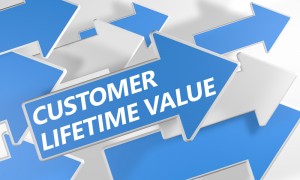Marketing Automation: How Does the CEO Fit In?
 When is it best for a company’s CEO to get involved with the marketing team’s overall efforts – this is the question marketing automation answers for many organizations. The idea that the CEO of any-sized company turns his or her back to the marketing team’s efforts – taking a “set it and forget it” approach to advertising – is one that comes to life for many agencies and gets in the way of upgrading legitimate marketing efforts.
When is it best for a company’s CEO to get involved with the marketing team’s overall efforts – this is the question marketing automation answers for many organizations. The idea that the CEO of any-sized company turns his or her back to the marketing team’s efforts – taking a “set it and forget it” approach to advertising – is one that comes to life for many agencies and gets in the way of upgrading legitimate marketing efforts.
Knowing this, how can any organization’s CEO make sure that the company marketing team is on board with making changes that benefit the organization from the ground up?
Understanding Marketing Automation
Many companies avoid choosing marketing automation services due to the work it would create on their end. Let’s face it – many companies don’t make it a priority to connect sales and marketing departments the way they should. This results in a disjointed effort between sales and analysts, creating unhappy customers and getting in the way of productivity.
Marketing automation is a great way to not only establish and track legitimate leads for any organization, but to develop an internal process that unites sales, marketing and execution departments. Because the process of getting a lead all the way to working for a customer require follow-up, tracking and cooperation on the back end, a work system can be set in place that solidifies the efforts of these departments like never before. The result is a workflow that’s not just fully automated, but addresses the unique needs of all areas of the business.
Getting the Right Training
The training involved with implementing marketing automation is not just for employees or individual department heads – the top-level of the organization – particularly the CEO or business decision maker – should have some idea of how marketing automation works and how it may be implemented within the organization as a whole.
The best way to ensure these strategies are in place and working for a business is to have the CEO go through the appropriate training, delegate responsibility and understand how everything works. This can only be accomplished with a marketing automation team that cares about its business and customers. A solid marketing automation system needs to be in place, but a team willing to train employees (and CEOs) and to stick around for follow-up is integral to the process working for everyone involved.
The Lead Liaison team doesn’t drop off service after marketing automation – we stick around to make sure all companies’ needs are met from the top down. Talk to us about a consult today!








